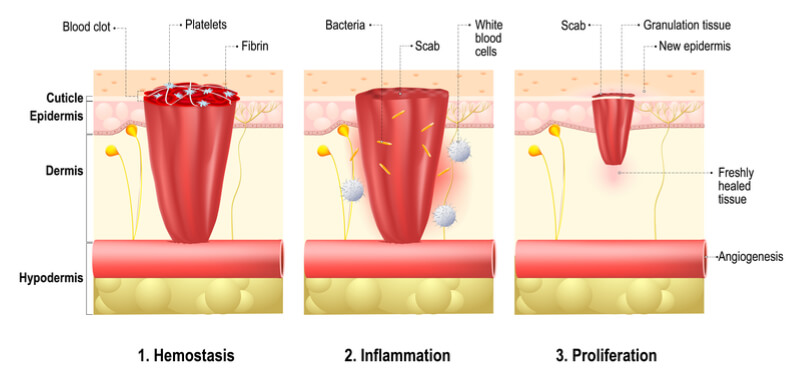Newsletter Signup - Under Article / In Page
"*" indicates required fields
Swedish scientists have used bacteria to deliver a chemical into wounds that speeds up the healing process. This could help to prevent their infection with dangerous strains of resistant bacteria.
Researchers at Uppsala University have identified a technique to accelerate the wound healing process and reduce the chance of infection. The study, published in PNAS, explains how increasing the levels of a protein called CXCL12 recruits more immune cells to help the damage to be repaired. During preclinical testing in mice, the group found that its technique “strongly accelerated” wound healing.
The treatment of large and chronic wounds is a big burden to healthcare systems around the world as their treatment is currently a slow and drawn out process. At the moment, doctors and nurses help the wound along with a variety of dressings, antibiotics to prevent infection, and medical debridement, which removes unhealthy tissue to stimulate regrowth.
The problem is enhanced by a globally aging population and increasing rates of chronic diseases like diabetes, both of which are factors that cause wound healing to slow down. This puts patients at a greater risk of infection – a major concern considering the growth of antibiotic resistance, which now kills more than 700,000 people a year.
However, the researchers have found a way give the wound healing process a boost by altering the injury’s microenvironment and the behavior of specific immune cells. This was achieved by increasing the amount of CXCL12, a special type of cytokine called a chemokine, in the wound. CXCL12 is delivered to its target by lactic acid-producing bacteria, which synergizes treatment by lowering the pH, as this stops the degradation of the chemokine.

Mia Phillipson, Professor of Medical Cell Biology at Uppsala University, set out what’s next for the group: “We have a technology that works and now understand the mechanism behind it, how it accelerates wound healing. The next step is a study in a pig model.”
If the technology can succeed in animals and find its way into the clinic, it will come up against a number of biotech and pharma companies trying to solve this wound healing problem. A common approach boosts the levels of helpful wound healing growth factors at the injury like platelet-derived growth factor (PDGF).
Many biotechs hope to harness the power of regenerative medicine to repair damaged tissue. RenovaCare has made a stem cell gun, which helped a man with bad burns to 30% of his body, while German and Italian researchers genetically-modified stem cells to treat the ‘butterfly child’ who had lost around 80% of his skin. Finally, Kerecis has taken advantage of the natural properties of fish skin to speed up wound healing.
Some may see the irony in using delivering bacteria into a wound to prevent infection but there is far more to these tiny microbes than causing infection, as you’ll know if you’ve read our microbiome review. With growth factor approaches limited by their high costs and stem cell techniques having to contend with ethical concerns, the Swedish research group’s technology may be our best bet.
Images – Ev. Safronov / shutterstock.com; Designua / shutterstock.com






